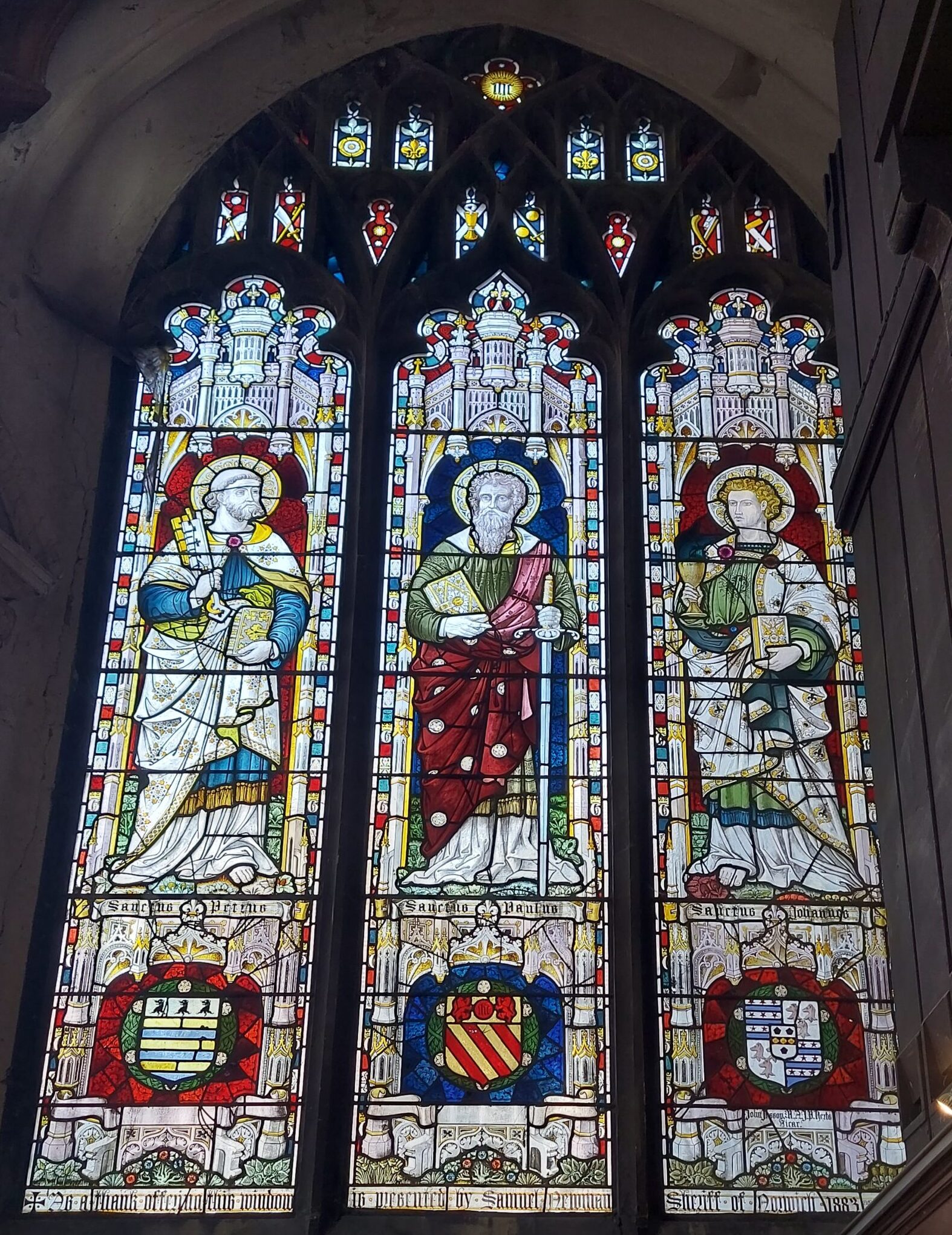After doing her placement as a Collections Assistant at NHCT in 2023, Sally Piper tells us about the east window of the north aisle of St Gregory’s Church. Sally documented the objects of the former churches of St Gregory’s, St Michael at Plea and St Peter Hungate, and made them available on online catalogue, via the eHive platform.
To search our online catalogue, visit https://ehive.com/collections/203298/norwich-historic-churches-trust.
Image: The east window of the north aisle of St Gregory’s Church.

The church at St Gregory was closed to religious worship in 1971 and since 2011 has been used as an antiques centre run by multiple vendors. It is open to the public every day, with a busy atmosphere and interesting antiques.
The church is home to several historically significant wall paintings, as well as ledger stones and wall tablets. However, perhaps the most notable historical artefacts are the stained-glass windows.
Stained glass has been an important artistic aspect of churches since the early twelfth century, with styles and techniques evolving over time. Glass was tinted during the melting process by adding powdered metallic oxides, and the glass sheets would be cut into shapes and joined together based on the design. Colour could be painted onto the panels using specialist glass paint, which was fired to adhere to the glass.
The photograph above shows the window at the eastern end of the north aisle of St Gregory. This window has three vertical panels which each display a saintly figure: (from left to right) Saint Peter; Saint Paul; and Saint John the Evangelist. We can identify the saints due to the objects they are holding, and by comparing these panels with other depictions of the saints. Saint Peter is shown holding two keys, given to him by Jesus Christ as the keys to the kingdom of Heaven. Saint Paul holds a book, representing the Epistles in the Bible. He also carries a sword, due to his belief in the power of the word of God. The sword also hints at his death as a martyr by decapitation. Saint John the Evangelist holds a chalice, referencing a story in which he was challenged to drink a cup of poison to prove his faith and survived. It also symbolises the strength of his relationship with Jesus Christ. Across the bottom of the window, a caption reads: ‘As a thank offering this window is presented by Samuel Hemman Sheriff of Norwich 1883’.
Many of the stained-glass windows of that time were created by J & J King of Norwich, one of four firms in the area that supplied windows to churches across the county and beyond. This period saw the revival of Gothic architecture, and the rediscovery of medieval styles, which influenced the construction of stained-glass windows such as those at St Gregory. For example, the use of geometric grisaille patterns has a clear link to the techniques used in stained-glass windows in the twelfth century.
I encourage you to visit the church at St Gregory – you’ll spot some fascinating church objects and perhaps buy some interesting while you’re there!
Sally Piper, Collections Assistant Placement 2023 – MA Cultural Heritage and Museum Studies
Edited by Tim Cook and Sandra Martins
Sources:
https://www.vam.ac.uk/articles/stained-glass-an-introduction/
https://stainedglassinc.com/doc/Guide-to-Saints-Symbols.pdf
https://www.christianiconography.info/index.html
https://aleteia.org/2018/10/03/why-is-st-paul-depicted-carrying-a-sword/
https://www.ecclesiasticalandheritageworld.co.uk/news/877-a-brief-history-of-stained-glass
http://www.norfolkstainedglass.org/St_Gregory/home.shtm
http://www.norwich-heritage.co.uk/index.asp

Recent Comments